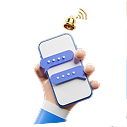 blog.by Nadine Mohamed
blog.by Nadine Mohamed
Data entry work is a foundational administrative task that involves the process of inputting, updating, managing, and maintaining data in digital formats. It plays a critical role in ensuring that organizations have accurate and up-to-date information for decision-making, reporting, customer service, and regulatory compliance. Data entry is used across a wide range of industries, including healthcare, finance, education, retail, logistics, and government services.
While data entry is sometimes perceived as simple or repetitive work, it requires a specific set of skills, attention to detail, and familiarity with digital tools and systems. In this comprehensive guide, we’ll explore what data entry work involves, the various types, necessary skills, common tools, and the importance of data entry in modern organizations.
What Does Data Entry Work Involve?
Data entry work involves the conversion and management of information—whether handwritten, printed, scanned, or spoken—into organized digital formats. These digital formats may include databases, spreadsheets, word processing documents, or specialized software applications.
Key Tasks in Data Entry Work
- Entering Information: Transferring text, numbers, or codes into digital formats such as Excel sheets, database systems, or web forms.
- Updating Records: Modifying or correcting existing information to ensure accuracy and completeness.
- Verifying Data: Checking data entries against source documents to identify and correct errors.
- Organizing Files: Creating and maintaining structured digital files for ease of access and reporting.
- Transcribing Data: Converting audio files, scanned images, or handwritten notes into typed text.
- Formatting and Sorting: Organizing data into specific formats or categories for analysis or presentation purposes.
Types of Data Entry Work
There are several categories of data entry, depending on the nature of the information and the methods used. Each type may require different tools, techniques, and levels of expertise.
Basic Data Entry
This is the most common and straightforward type of data entry.
- Involves inputting standard information such as names, addresses, phone numbers, and identification numbers.
- Typically used in customer service, form processing, and administrative support roles.
- Often repetitive but requires consistency and accuracy.
Transcription
In transcription work, the data entry professional listens to audio recordings and types out the spoken content into a readable text format.
- Common in medical, legal, academic, and media fields.
- Requires excellent listening skills, strong grammar, and fast typing.
- Can be challenging due to audio quality or speaker accents.
Data Cleaning
Also known as data scrubbing, this involves reviewing datasets to find and fix inaccuracies, duplicates, formatting errors, or inconsistencies.
- Essential for ensuring data quality before analysis or reporting.
- May involve comparing multiple sources or using validation tools.
- Requires good analytical skills and familiarity with database rules.
Medical Data Entry
Specialized form of data entry that involves handling patient information, medical histories, prescriptions, lab results, and billing codes.
- Requires knowledge of medical terminology and coding systems like ICD or CPT.
- Often subject to strict data privacy regulations (e.g., HIPAA).
- Accuracy is crucial to prevent misdiagnoses or billing issues.
Data Processing
More complex than simple entry, this involves manipulating and analyzing data using software tools.
- Tasks may include sorting, filtering, applying formulas, or converting files.
- Common in finance, research, and operations.
- May require some knowledge of programming or statistical tools.
Online Form Filling
Involves entering information into digital forms for purposes such as registrations, surveys, job applications, or service requests.
- Often part of customer service, e-commerce, or back-office support.
- Requires accuracy and the ability to follow formatting rules or validation prompts.
Skills Required for Data Entry Work
To succeed in data entry, professionals must possess a combination of technical abilities and soft skills. These competencies ensure that the work is completed accurately, efficiently, and securely.
Typing Speed and Accuracy
- One of the most essential skills in data entry.
- A good data entry professional should type at least 40–60 words per minute (WPM) with a high degree of accuracy.
- Typing errors can lead to costly mistakes or data integrity issues.
Attention to Detail
- Precision is critical, as even minor errors can compromise the quality of databases or reports.
- Data must be entered exactly as provided, with careful checking for mistakes.
- Proofreading skills are helpful.
Computer Literacy
- Familiarity with word processors (e.g., Microsoft Word), spreadsheets (e.g., Excel), and database software.
- Ability to navigate file systems, use keyboard shortcuts, and troubleshoot minor technical issues.
- Knowledge of cloud-based tools (like Google Workspace) is increasingly important.
Time Management
- Data entry work often involves deadlines, volume targets, and productivity metrics.
- Being able to prioritize tasks, avoid distractions, and maintain a steady workflow is essential.
Communication Skills
- While the job may be solitary, professionals must understand written instructions, communicate with supervisors or clients, and sometimes collaborate on shared projects.
- Clear communication ensures that ambiguities or errors in source materials are resolved quickly.
Confidentiality and Integrity
- Data entry may involve sensitive information such as personal details, financial records, or medical histories.
- Professionals must respect privacy policies and handle data with discretion and responsibility.
- Trustworthiness is essential in industries like healthcare, banking, and government.
Tools and Software Used in Data Entry
Several digital tools and platforms support efficient and accurate data entry. The choice of software depends on the industry, nature of the data, and task complexity.
Word Processors
- Microsoft Word or Google Docs for text entry and transcription.
- Used for drafting letters, reports, or transcribing interviews.
Spreadsheets
- Microsoft Excel or Google Sheets are essential for numerical and tabular data.
- Enable sorting, filtering, formula-based calculations, and chart creation.
Database Management Systems
- Tools like MySQL, Oracle, or Microsoft Access for structured data storage and retrieval.
- Require understanding of tables, fields, queries, and data types.
Data Entry Software
- Specialized platforms tailored for form filling, inventory systems, or CRM systems.
- Examples include Salesforce, Zoho, SAP, or QuickBooks in accounting.
OCR Tools (Optical Character Recognition)
- Used to digitize text from scanned documents, images, or printed forms.
- Reduces manual typing and improves efficiency in document management.
Transcription Software
- Tools like Express Scribe, Otter.ai, or Descript assist with audio-to-text conversion.
- Features like playback control, timestamping, and speaker identification aid transcription accuracy.
Importance of Data Entry Work
Despite advancements in automation and artificial intelligence, data entry remains a fundamental operation in business processes. Its significance spans various organizational functions.
Ensures Data Accuracy
- Clean and correct data is the foundation of reliable analytics, reporting, and decision-making.
- Inaccurate data can lead to poor outcomes, legal issues, or lost revenue.
Supports Business Operations
- Many departments rely on timely and accurate data for daily functions like billing, inventory, payroll, and customer service.
- Smooth data flow helps businesses operate efficiently and stay competitive.
Enables Informed Decision-Making
- Executives and managers depend on up-to-date databases and dashboards to monitor performance and plan strategy.
- Data entry is the first step in building these systems.
Helps Maintain Compliance
- Regulatory bodies often require organizations to maintain accurate records of transactions, employee details, or client interactions.
- Data entry helps organizations stay compliant with laws and standards.
Enhances Customer Satisfaction
- Properly recorded customer details allow for better service delivery, targeted marketing, and personalized communication.
- Accurate data improves the customer experience and builds trust.
Common Industries Using Data Entry
- Healthcare: Managing electronic health records (EHR), patient histories, and insurance claims.
- Banking and Finance: Processing transactions, account details, and compliance documents.
- Retail and E-Commerce: Updating product catalogs, managing customer databases, and order processing.
- Government: Handling census data, license applications, and public service records.
- Education: Recording student information, grades, and enrollment statistics.
- Legal Services: Typing case summaries, legal transcripts, and document indexing.
Challenges in Data Entry Work
While data entry is essential, it comes with certain challenges:
- Repetitiveness and Fatigue: Long hours of repetitive tasks can lead to fatigue and errors.
- Data Overload: Large volumes of data can overwhelm entry operators if not managed with automation or segmentation.
- Quality Control: Ensuring consistent data quality across teams or sources can be difficult.
- Security Risks: Sensitive data must be protected against breaches or misuse.
Data entry work is a vital administrative function that underpins the efficiency and accuracy of organizational data management. Although often behind the scenes, data entry professionals are essential in maintaining structured, usable information for various business functions. The job requires more than just typing—it involves focus, accuracy, software skills, and the ability to handle confidential information responsibly.
In an increasingly digital world, data entry remains a cornerstone of effective data management, helping organizations operate smoothly, make informed decisions, and serve customers more effectively. Whether manual or assisted by automation, the value of precise data entry work continues to grow across industries.
Are you ready to get started and study abroad? Just browse through more than 110,000 diverse programs worldwide, Educatly offers a diverse array of educational opportunities tailored to your interests and career goals.
Signing up is easy! Simply create a profile and explore our extensive database to find the perfect program for you. Whether you're drawn to renowned universities in bustling cities or serene campuses in scenic locations, Educatly ensures you'll find a match that suits your aspirations.
To receive personalized guidance every step of the way, schedule a free consultation with one of our experienced educational advisors. They're dedicated to helping you navigate the application process, understand visa requirements, and secure scholarships or financial aid, ensuring you access top-tier educational opportunities with confidence.




 blog.feedback.yes
blog.feedback.yes blog.feedback.no
blog.feedback.no